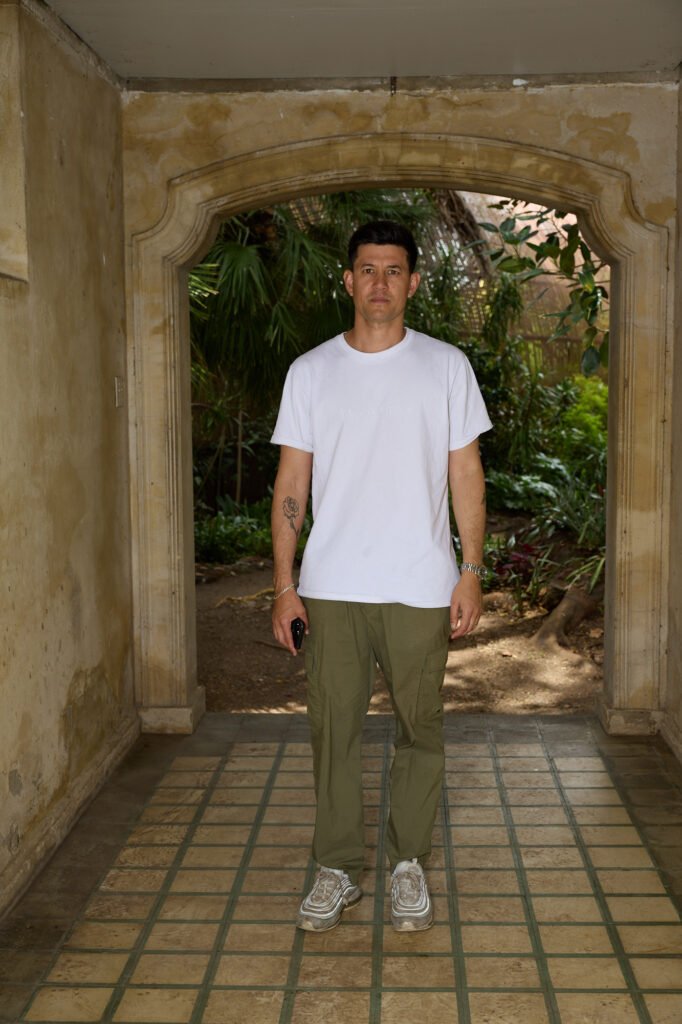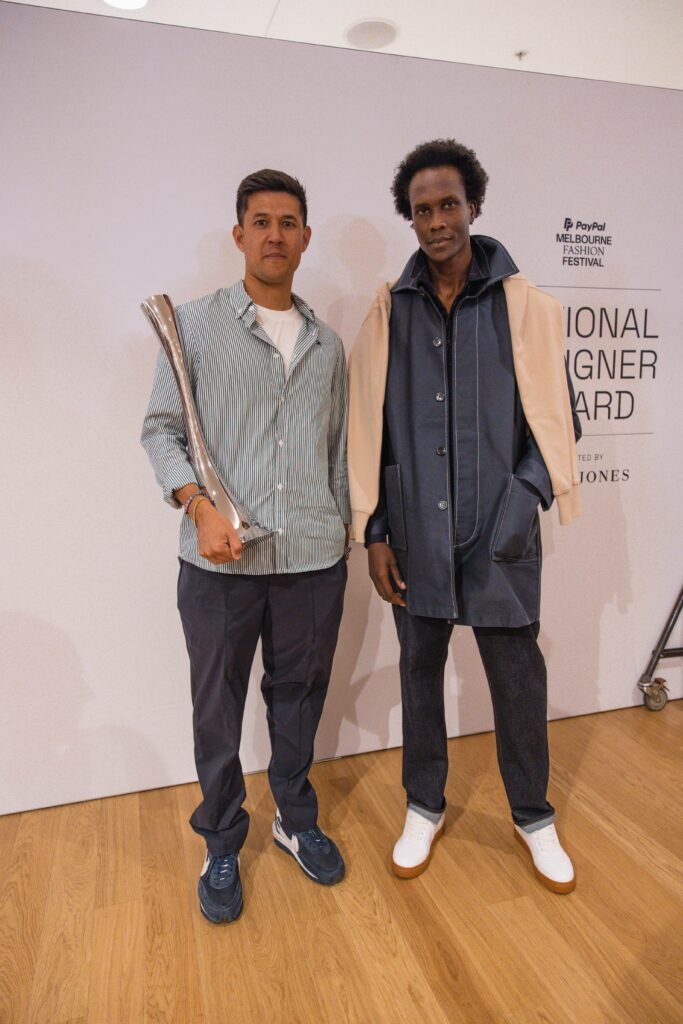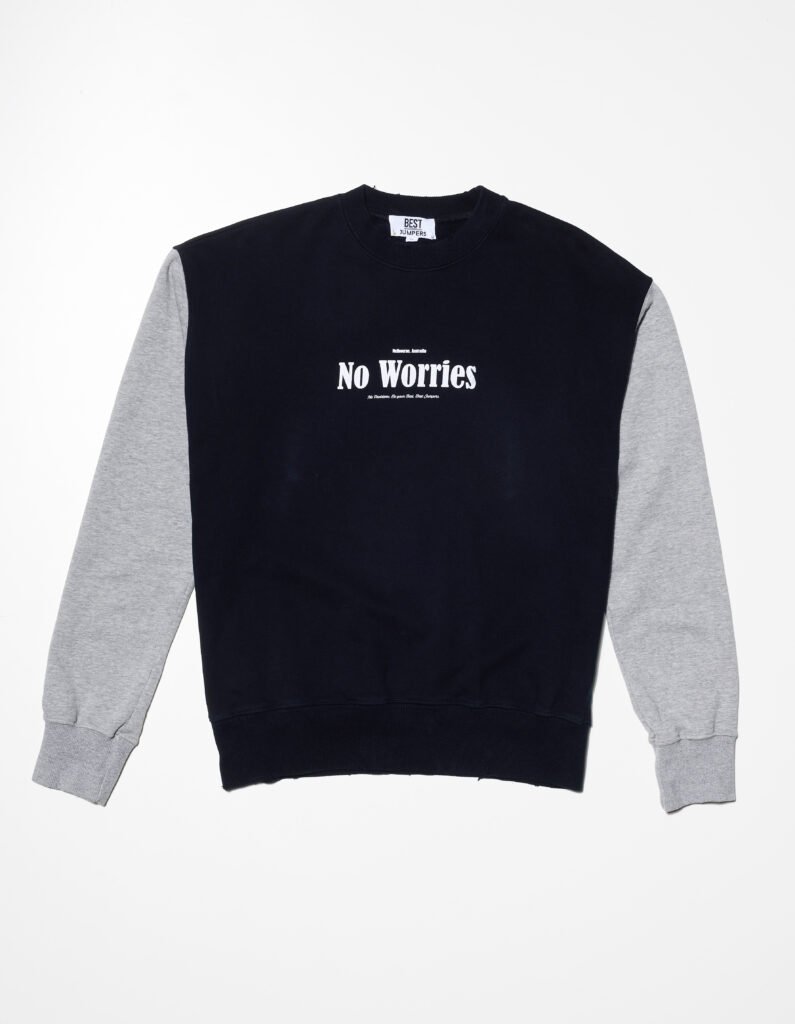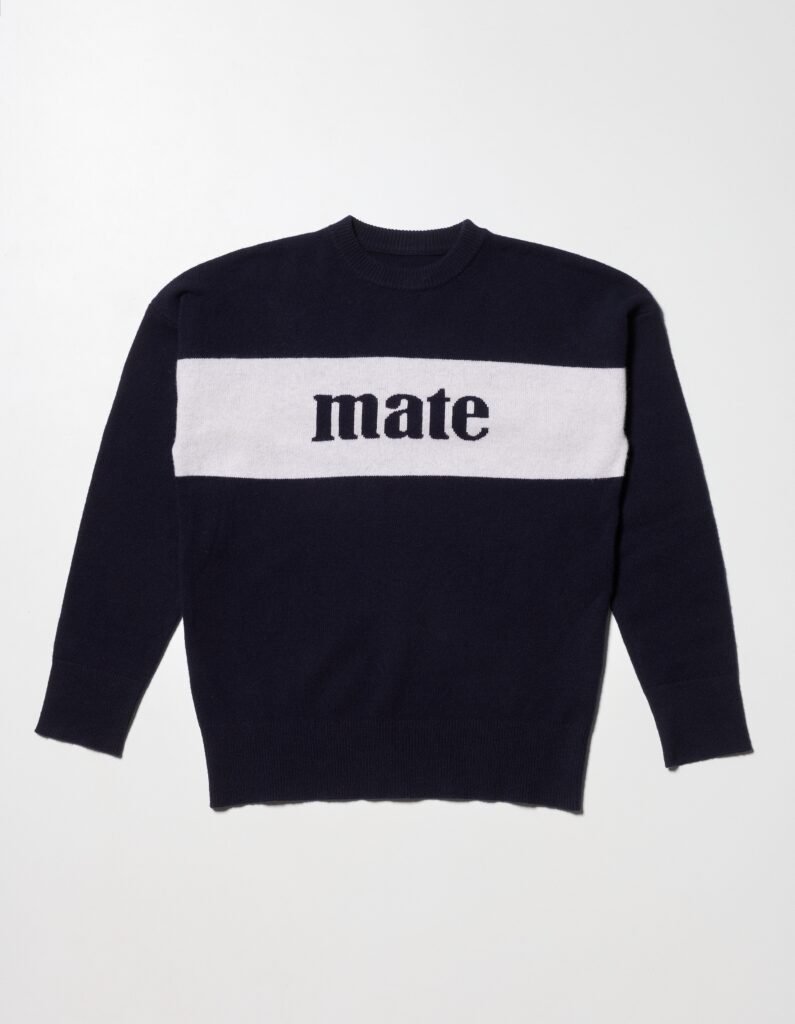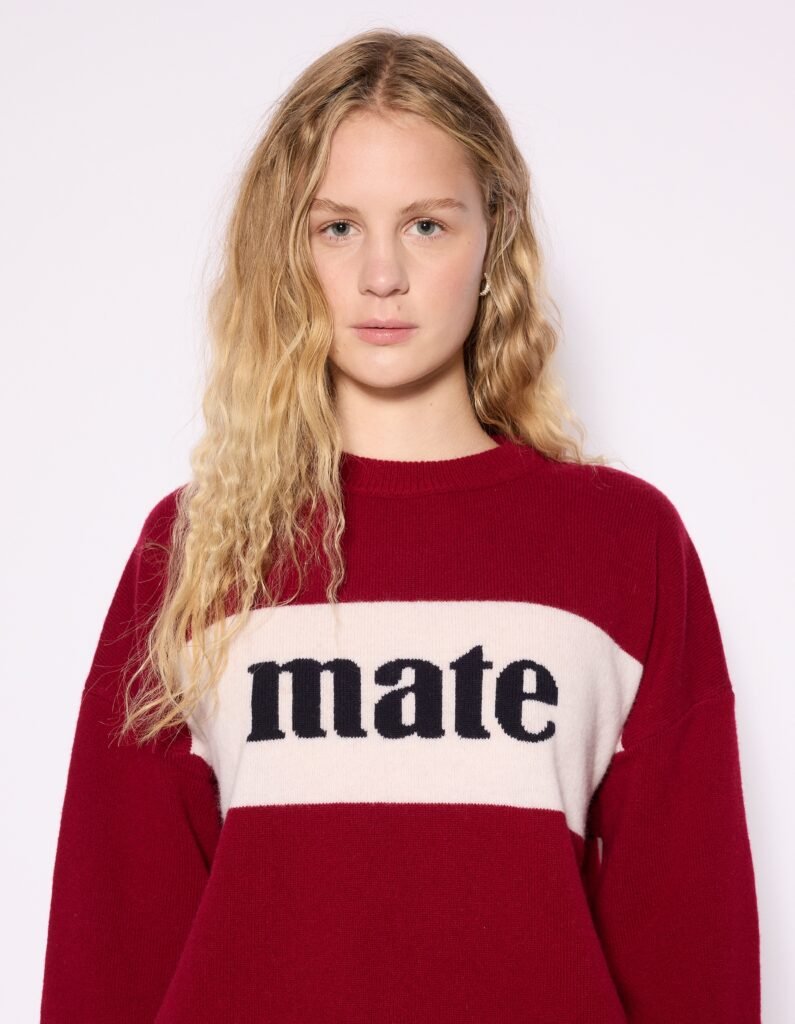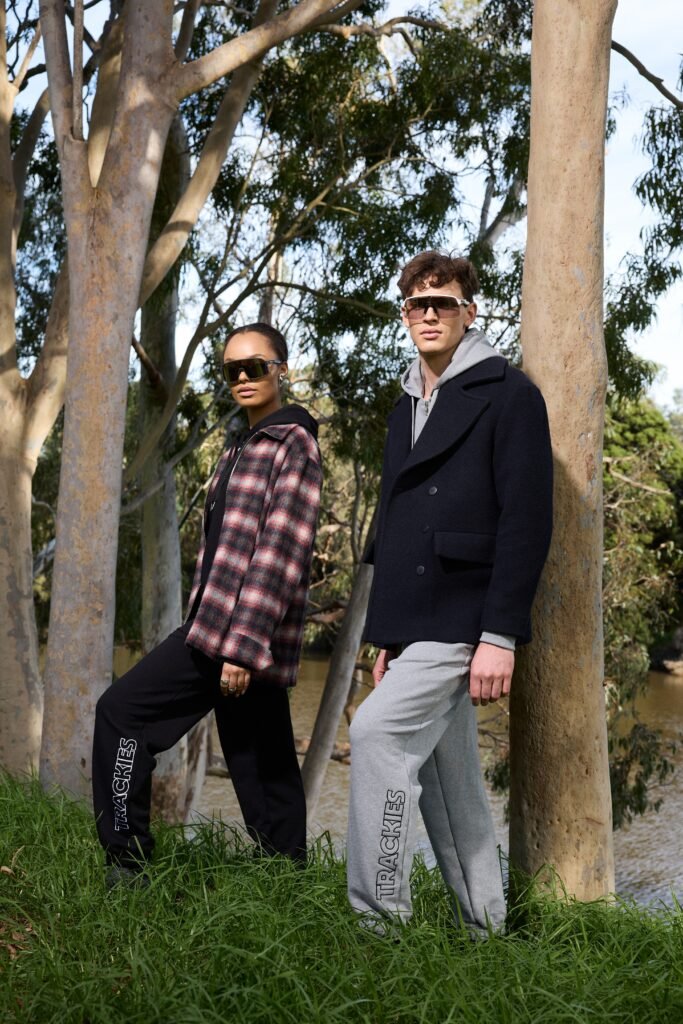
Let’s go back to the beginning. How did you get started in Fashion?
So I originally studied in Melbourne, doing a business degree. But I always wanted to study Fashion, so I went to Parsons in New York.
I heard about the school when I was in Australia and I always wanted do something more creative so I moved to New York. After the course, I then ended up doing a lot of good internships, including Rag and Bone and then worked with Ralph Lauren, before coming across to Club Monaco (that was owned by Ralph at the time).
your transition from obviously sort of club Monaco, and moving back to Melbourne, and starting up your own label, what was that sort of transition like, and what were the sort of motivations factors for that?
Yeah. I always wanted to start my own brand. So even when I was over there, when I was working as a menswear designer, I had ambitions to start my own brand. I didn’t know exactly what I wanted to do, being over there and being away from home, it made me realise that I wanted to do something that was uniquely Australian. And eventually, you know, having worked in industry for three years.
I wanted to move back, and if I wanted to move back, I want to stop my own brand. So again, more often, for a brand like Ralph Lauren, which is American Heritage, logo brand, I had sort of a concept also, we were taught at fashion school, it’s always about your heritage and having, creating something that was based around where you’re from. Yeah, it was reflective of that.
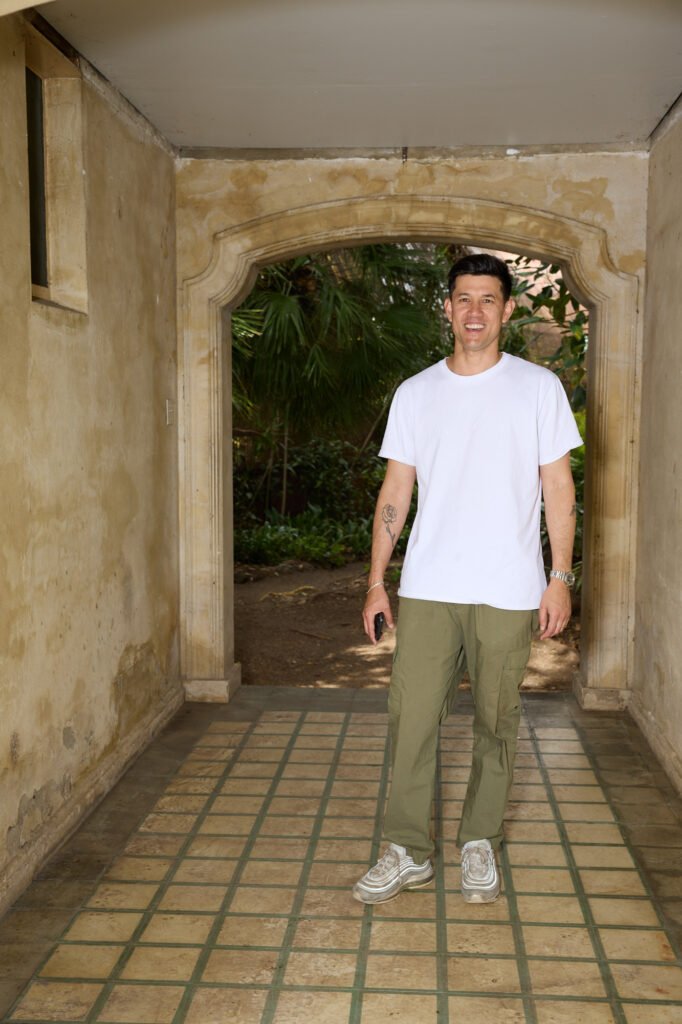
Would you say that the like sort of more traditional sportswear sort of like labels that you worked for?
Yes. Was there sort of like, you know, obviously just sort of like looking around a little bit? It’s a more progressive more contemporary business. Yes. like, I’ll be able to push back to what you’ve done.
because you were sort of like sick of doing that, and you wanted to, or had with this aesthetic, like always sort of yours, regardless. –
I think that this aesthetic was kind of mine regardless. – Okay. – Even working for those brands, and even like a lot of the people work with in those brands come from like really different backgrounds. – Yeah. – Yeah, I worked on a lot of different brands. I had a lot of, I didn’t intern ship, I interned at like rag and bone, Philip Lim and Band of Outsiders
But I still think that this is, yeah, this is, I think my aesthetic also came from just living in New York as well. I loved always streetwear growing up and as brand, those streetwear brands as well.
The Supreme’s and brands around skateboarding. So I always had that aesthetic. Yeah. And I think it probably made a little bit more some of the things before in my science now, a bit more refined, working in a place like Ralph or Club Monaco, which probably yeah.
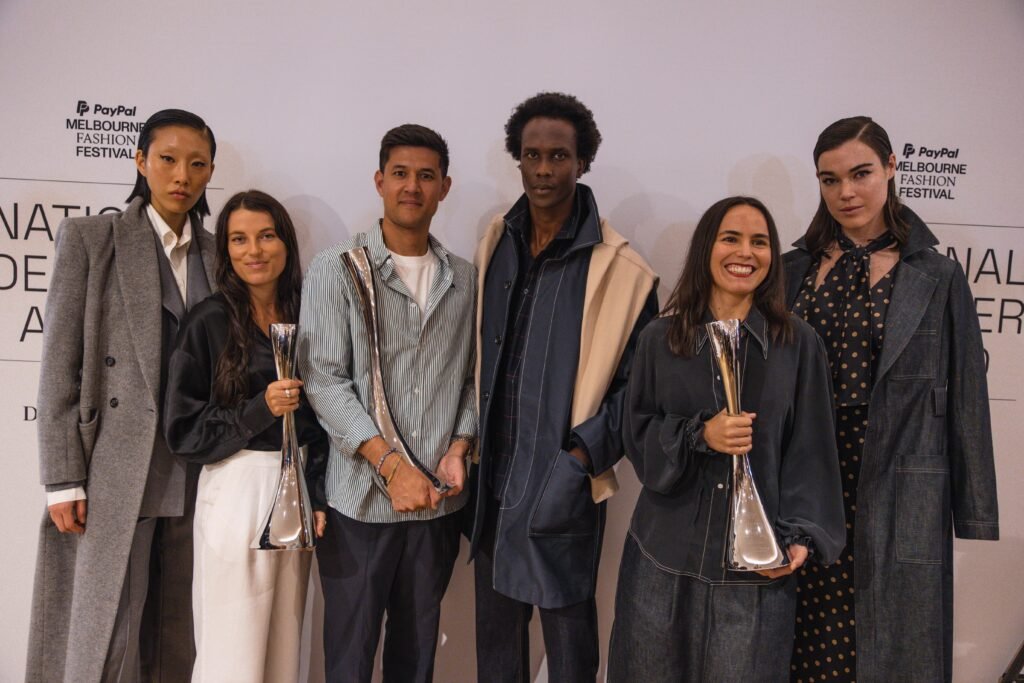
What were the biggest take-homes from working with those big houses?
I think I was learning a huge amount about garments.
I took a lot of things away from actually working from the business side as well. In terms of merchandising, as a designer you always, you’re still doing the design, but you’re also, as in we’ve like the merchants, the others, the production team. So you get a little eye into what it would be like running a business and I think I’ll be able to apply to all of those learnings.
Was there an element that because you were working for sort of one of the big heavy weights that obviously would have years of manufacturing contacts and buying power of sort of scales of magnitude? Yeah. Was there an intimidation factor you starting from scratch essentially knowing that it’s sort of have to go about it the hard way?
Yeah, I think that’s a kind of a good point because it shows how hard it is, it also, and to even find those contacts and to get the ball rolling. I think that’s quite true. And from my perspective, It was just one step at a time. It took me a while, you know, it took me two years to be able to make, well, only doing cut and sew, like sweatshirt garments for the first, sort of two years. So from there I gradually met new different people, had different factories and developed like a community of sort of worked or discovered the industry here.
And so what was the process? So you left Club Monica, you came back, you knew you wanted to start your own life? Yes. How did you sort of get things going from sort of day one? Was that sort of like a backyard operation or selling to friends?
Yes. Definitely seling to friends… In terms of production, I’ve had family in Fashion, which is I’m growing up. I’ve always had that thing that I wanted to work in Fashion both from my parents my mum’s side and my Dad’s side. On my mum’s side, based in Hong Kong, they’ve been in the industry in terms of factories. My grandfather was a shoe-maker.
That was a side of the business, particularly here that I had to help from family, as in terms of finding a pattern maker, a factory to make things, because I do everything locally. In terms of fabric, I’m still importing it from Japan via an agent in New York that I met through work in Ralph Lauren and Club Monaco. And then from there, starting off, it was really, yes, networking withinn friends, doing like launch parties and things and then also through social media. That would be one, starting online only.
And did you start from day one designing unsiex?
Yes. I would say it’s mainly menswear inspired garments, everything’s designed to be unisex so like our pants… a lot of them have elasticated waists but sizing in terms of our tops and my sweatshirts, the gap between extra small and extra large is quite big so that’s the sort of thing I’ve taken in mind in terms of the design, but yeah, and a lot of the styles that when I say “menswear inspired”, I think as a menswear designer, for me, that sort of aesthetic on women, and which is more and more wearing, you know, boyfriend shirts, boyfriend jeans, oversized tops, it’s just worked organically.
Yeah, and in terms of the made in Melbourne element. So is everything you produce made here or just some pieces? –
Mostly everything is made here except for our knitwear, which is made in Hong Kong through my family. Our sneakers are made overseas, but everything else is made here. So I would say roughly 80% of the collection is made here.
. – Okay. And from, as you mentioned, like the sort of early days when you’re sort of doing pop ups, when was the point where you were like, it’s time to open a shop front?
So we a did a pop-up in Gertrude Street actually, and in Brunswick Street, I think, in our first, second year of the business, and those did really well. So I think having a garment which is slightly more expensive in terms of sweatshirts, having a physical store where people could actually feel the garments is big factor. From that point I always thought that having a permanent store would be beneficial.
Made in Australia?
There are a lot of skilled workers like our pattern makers and the local factories who do an amazing job. Some great factories. So in terms of them, we’re so not looking into, it’s a hiring product anyway and it’s really important that the craftsmanship meets the quality of the fabric and also for quality control. It’s just a lot easier especially when you’re a small business from my perspective. For sure. Yeah. H
ave you had any sort of issues sort of going for that sort of new new or environment where it’s sort of been obviously regimented for some time and you sort of know what you’re getting as opposed to coming back and sort of feeling out factories and what they’re capable of doing. You might have a machine in concepts that are unable to be manufactured here. Yeah, societably is that funny. I think
– I think that’s definitely been interesting, especially I guess from New York, I was working for businesses where there was a production team and you know, a merchandise team. – Yeah. – And how ever you’re just, – We’re using them, you know, giving you designs and then it comes back and then you, you know, you ask for different specifications, you work with a technical designer. So, that was the first in coming back here, that was something that I hadn’t really done before and is a whole era of working with a factory closely to get what you want. So definitely, that’s a team process has involved in all that. And I can imagine both the players as well from the factory and working out what you want but I felt like we have swaped some makers along the last five years and it’s always a little teething process at the start. In terms of where the samples come back wrong, the things I want you like, you have to build that relationship, I think. And then, for my perspective, it’s just, yeah, it’s always taken a bit of time, but then once it’s finished time, you can get great results.

Yeah, nice. Yeah. In terms of the sort of cycles of your garment when you’re or else they do feel there’s any sort of pressure to sort of…
So the line in terms of four seasons to you, you know, more, you feel the pressure of the sort of fashion week, sort of like theater or as a kind of like our late-paces in my time and you know, the customers will sort of respond to that. How does this sort of that framing work?
Yeah. Well, best jumpers we do two seasons a year. And we might have some particular drops in high summer, and high winter. It often depends on production and when we get them. But we try to stick to that. And I guess the pressure of that is, we’re still, you know, for the warmer weather months, we have our spring summer collection, because we don’t currently do wholesale. So that’s, we can run it around pace but the only thing that we have purchased by obviously the weather. Yeah, it was done. We later on things and then that’s the main thing from having two seasons. But we’re now expanding the business so we have some potential wholesale opportunities from an next-season so that’s now changed. I changed a lot.
Are you moving forward? Is that sort of the way for the brand to grow? Wholesaling
Yes, so I think for us, it is a way for the brand to grow, especially because we want to grow internationally. We’re at this stage now, where we can meet demands for wholesale, so that we’re expanding our team and ramping up production.
And can you tell us a little bit about the design award that you want to see?
Yes, so there’s the National Design Award, which is part of Melbourne fashion festival presented by David Jones. And so that was announced recently, you know, we’ve got the last few months that we were the winner of that, which was an amazing experience and exciting for the brand.
Has that kicked on a little bit with sort of mentions and like contacts and that sort of thing? Like, have you ever felt sort of a bit of a momentum sort of what you’re from?
Yeah, yeah, absolutely. So in terms of just out there.of business we’ve had a lot of media after that, generally obviously for us in terms of awareness and sales has been fantastic and open up with us in New York, the Chinese and all sort of growth of business from the business side in terms of payout, Chinese and digital marketing. So we’re trying to make the most of that explore those opportunities to really further grow the business. and amazing everyone they’ve all known. want to continue to grow.
END PART ONE
Yeah, so essentially there seems to be a bit of a build of momentum with sort of Australian design as again and Australian manufacturing again. We’ve sort of since my sort of 20 years of sort of like, you know, teenagers are being aware of like Australian Fashion. I feel like we’ve had lots of like sort of blips on the map, but in terms of, you know,
sustainable industry. I feel like we haven’t really achieved like a proper market. Now that you’ve sort of seen both sides of the fence, what do you think it’s going to take for sort of labels like yourself to be sort of taken more seriously? And for people to understand the financial side of what it takes to have garments produced here, or any if you’re the design and
Yeah, you know, what it actually takes to make a design like, yeah, what do you think will help sort of like grow the Australian fashion industry in a more sustainable and sort of lasting way? Well, I think there’s definitely steps to that as well. And I think I’d hope brands like mine. I mean, that sort of like a goff from mine as well as to bro my brand within the tribe.
but also internationally, something that’s overtly Australian as well, and to be able to mark that overseas. And I think the local made thing and this Australian made thing is definitely, I think from a consumer point of view, people wanting that, people think wanting things made here, I also think that over see…
from me, like I said before, coming from, I mean, I learned Fashion and everything I was all my knowledge and everything that I sort of learned about. I didn’t know anything about this train fashion industry. I learned about the American fashion industry. So that was interesting for me how much working for brands, especially like Ralph, it might rag a bone which is they embrace from being made in.
USA or a lot of it is embracing the USA and that part of which I think is also the same for your pain brands and so that’s part of my part of my concept is doing that in a way like you know have got make and no worries on luxury garments and that sort of I guess to me was aware promoting other white while I wouldn’t have been Australian brand like that. I think sometimes people would think don’t say that as high Fashion here.
I think more it’s a lot of it’s resort where and bache but if you look at Melbourne and Sydney and in terms of straight where or yeah in terms of what people are wearing and and with or Melons obviously quite a big city I’m in terms of Fashion I think yeah I think there’s a different because it’s what I’m trying to communicate as a different um different voice with different type
Yeah. The types of Australian brands can be. I think in a lot of ways, like the fact that you’re sort of doing unisex, clothing with probably a men’s wear background. Yes. Historically, Australian men’s wear has sort of been a little bit like we’ve sort of gone like tutorial or we’ve gone extremely casual to the point where it’s sort of
of whatever you want to call that. – Yeah. – Whereas it seems that your aesthetic is something that I feel like you know could take a lot of boxes and almost be worn by a wider sort of subset of the community. I’m sure we both know people that will sort of like, you know turn their nose as upper, like man’s Fashion if it starts to look, to end Roger and his sovereign starts to look, to flashy whatever it may be.
Yeah, maybe we’ll take these sort of like designers like yourself that have some more pragmatic pieces that will make people I guess feel less intimidated. Yes. About getting into Fashion? Yeah. Yeah. Yeah. And I think that’s things that also we try and our trying to and design is make, I mean we have some things that have locus on it but in terms of a lot of the pieces and out like out of where their things are designed to last for a long time.
Yeah, and to be ageless, also, I mean, you need sexist sexist, ageless, like, beautiful garments or a last for a while. So I think having those, a mixture of some things that are more fun or it might be printed, like just stressed, switch it like I’m wearing, or a peacot, definitely been working on for a long time, and we’ve just got in, which is like a beautiful Pico that we’ve designed, it can be a piece that you can pretend, you know.
forever. I think having the mixture of those garments that can be making sure for us as well, I want to be accessible. There’s some more fashion forward pieces but to me, it’s trying to create garments as well that aren’t too trend forward in terms of silverweights. We follow basic sort of men’s way of principles where it comes to our jackets and there’s a lot of
and it’s using different fabrics, different fits and silhouettes that are made it’s slightly different but things that, you know, yeah, there’s something for everyone as well. Yeah, but it’s looking for something that’s beautifully made and, you know, yeah, is there a possibility that some of those pieces may even like be retained for sort of like, you know, the next like two, three, four, five years, yeah, if I’m I’m assuming if there’s like…
commercial value and keeping them on. Because of that factor, if they are more timeless pieces, the seal will let some more timeless. I guess there’s no real reason why they’d have to rotate them. Exactly. And then it’s the gums like those that you I feel like a lot of luxury brands, or whenever the same design, you’ll have pieces that are a similar age season, and it might be different fabrications, or that they run constantly.
H season which becomes like your core pace or core thing. So there’s definitely a design with that in mind as well to have things that are also a transcendental and it will last and then we can work well in the store or we can sell online like you said from H season. – Yeah. Do you think that the sort of Australian consumer is sort of best suited for your sort of almost.
design model or do you think like you know best jumpers will be scalable and you know like looking at getting the different parts of Asia Europe US. I guess that sort of your long-term goal as well. Yeah absolutely. Yeah obviously we’ll start off here and want to continuously grow within your stray market and I think you know winning that awards actually given it’s great recognition really for that but
goals always to have a brand that’s scalable globally. And I think we have the right ingredients from also working overseas to the brand that can be successful overseas. And I feel like people will definitely overseas people embrace. I think people embrace things from other cultures and other countries. And it should be the same for Australian Fashion. if you think about all the brands the price.
brands, the time brands, all their logos, all their heritage that they speak to and they do it in a click-dick sort of fun ways. So that’s what I’ve had in mind brands well in terms of, you know, with now type of typography and logos and inspirations that we do that are sort of uniquely Australian. I see that as being scalable globally and people have the appetite for that.
I guess just finally if you could sort of give a rough elevator pitch to if you are having a conversation with someone about what your designer’s static is and what your pieces sort of look like an embody what would be sort of like your short version of that. So I say where I’ve caught elevated casual wear. So I think a lot of the aesthetic is like I mentioned is men’s wear inspired what the core of the brand really.
is making beautifully made garments with unique fabrications. So I think at the core of it is the garment, and then in terms of our overall aesthetic, you know, we have aesthetics from streetwear, flasher and doing it a way, in a minimal way, but something that’s also the brand I see has been uniquely Australian. So perfect, that’s fine. Cheers! Beautiful! very well. Thank you.
very much.
